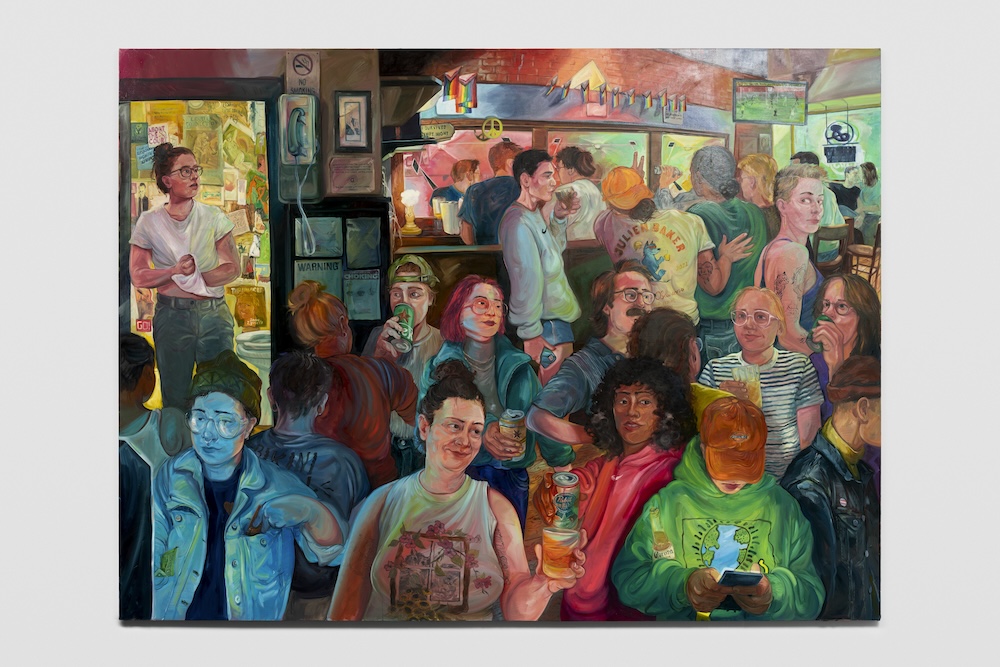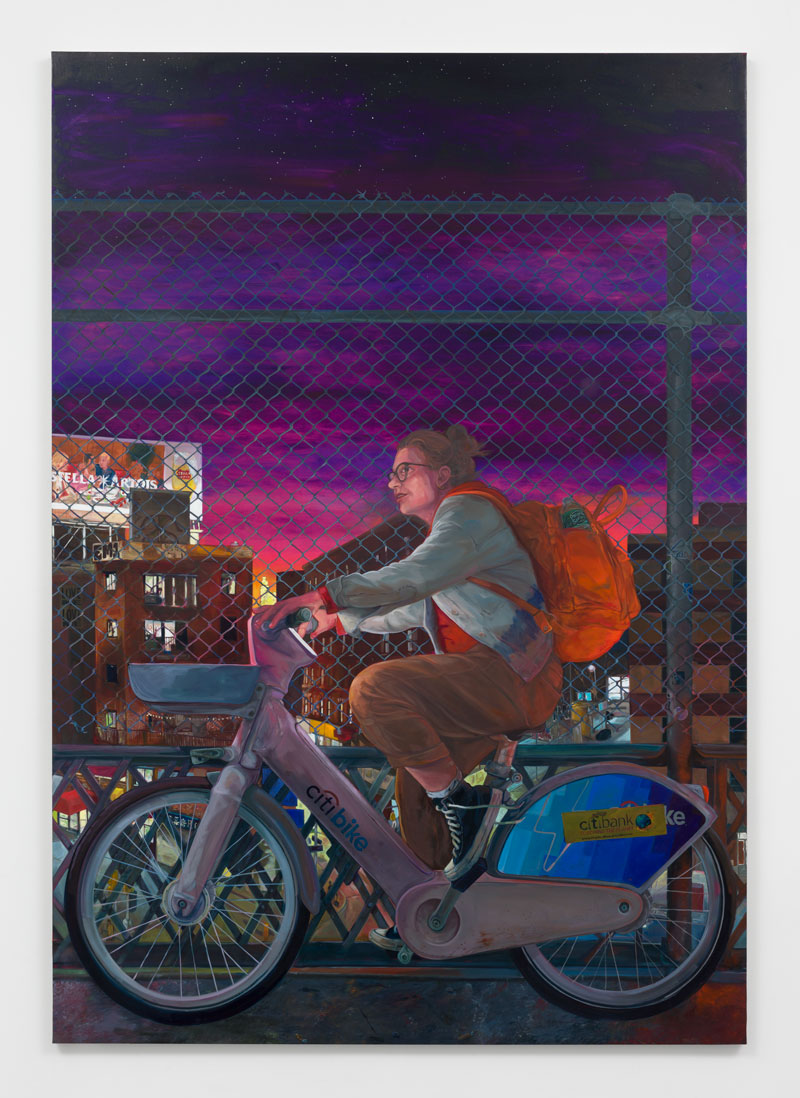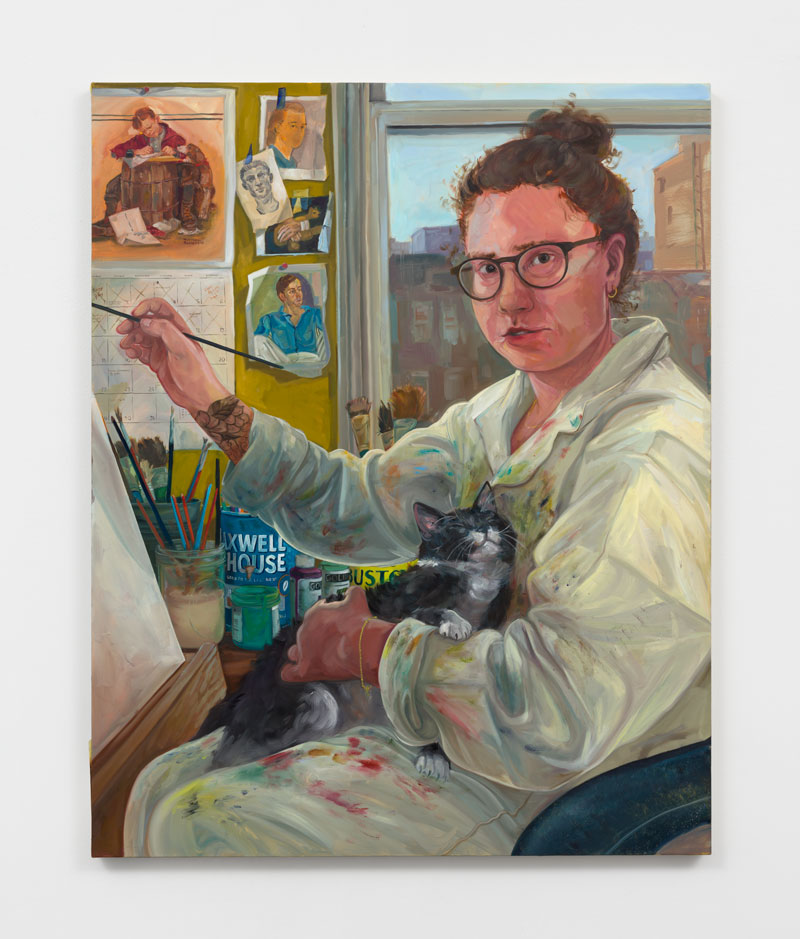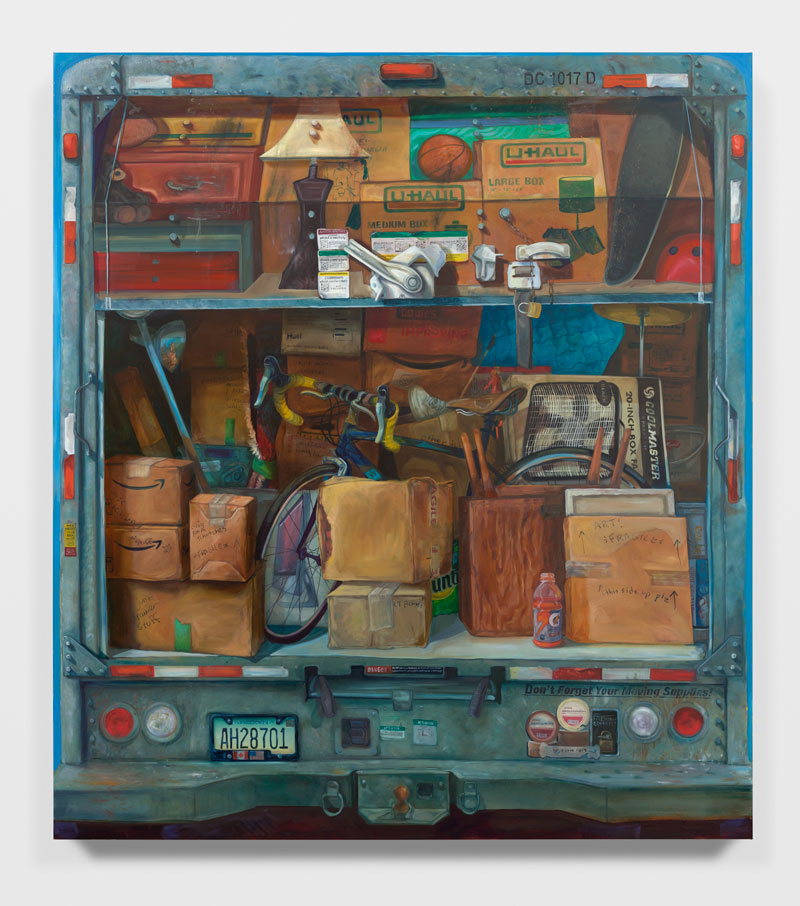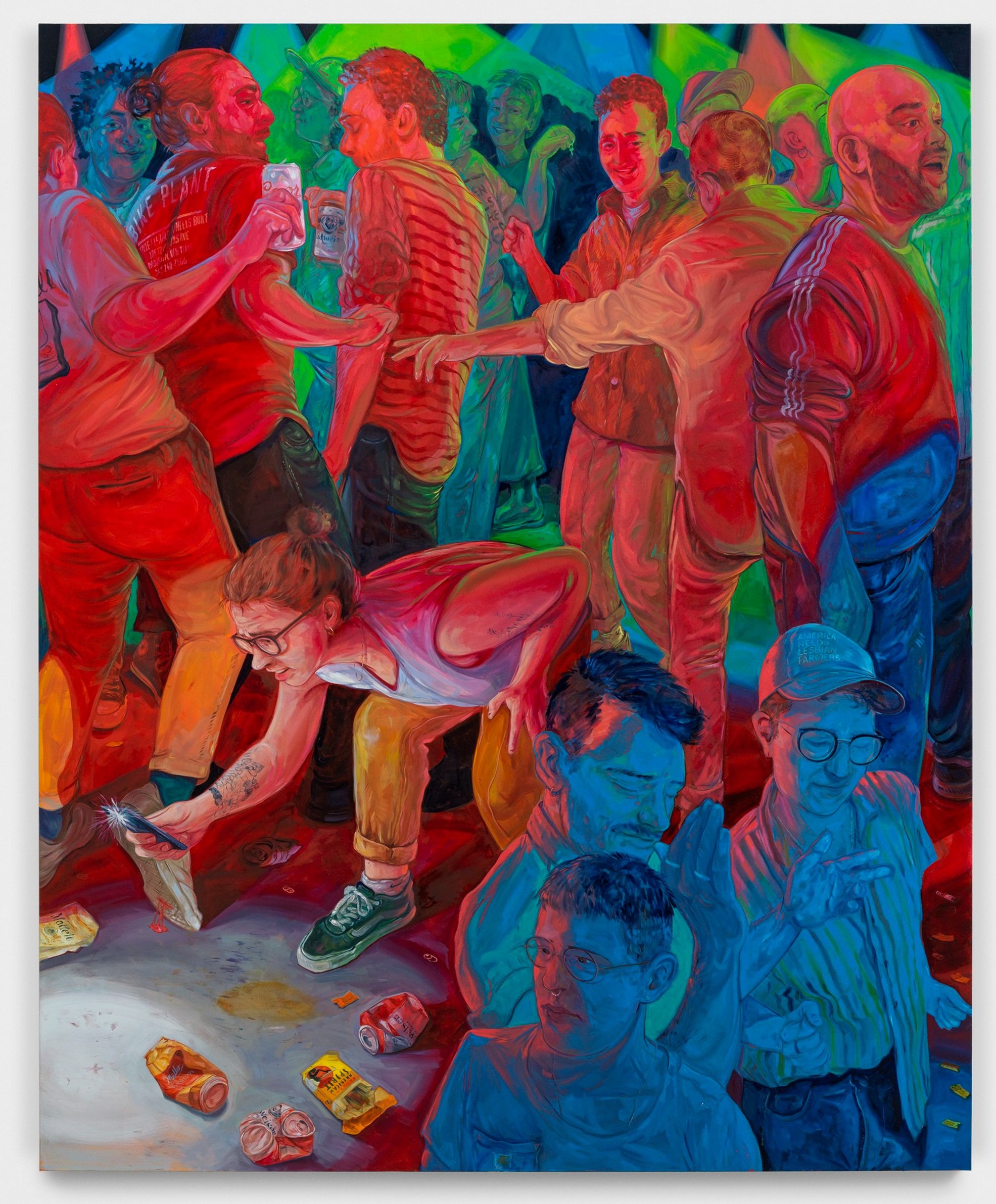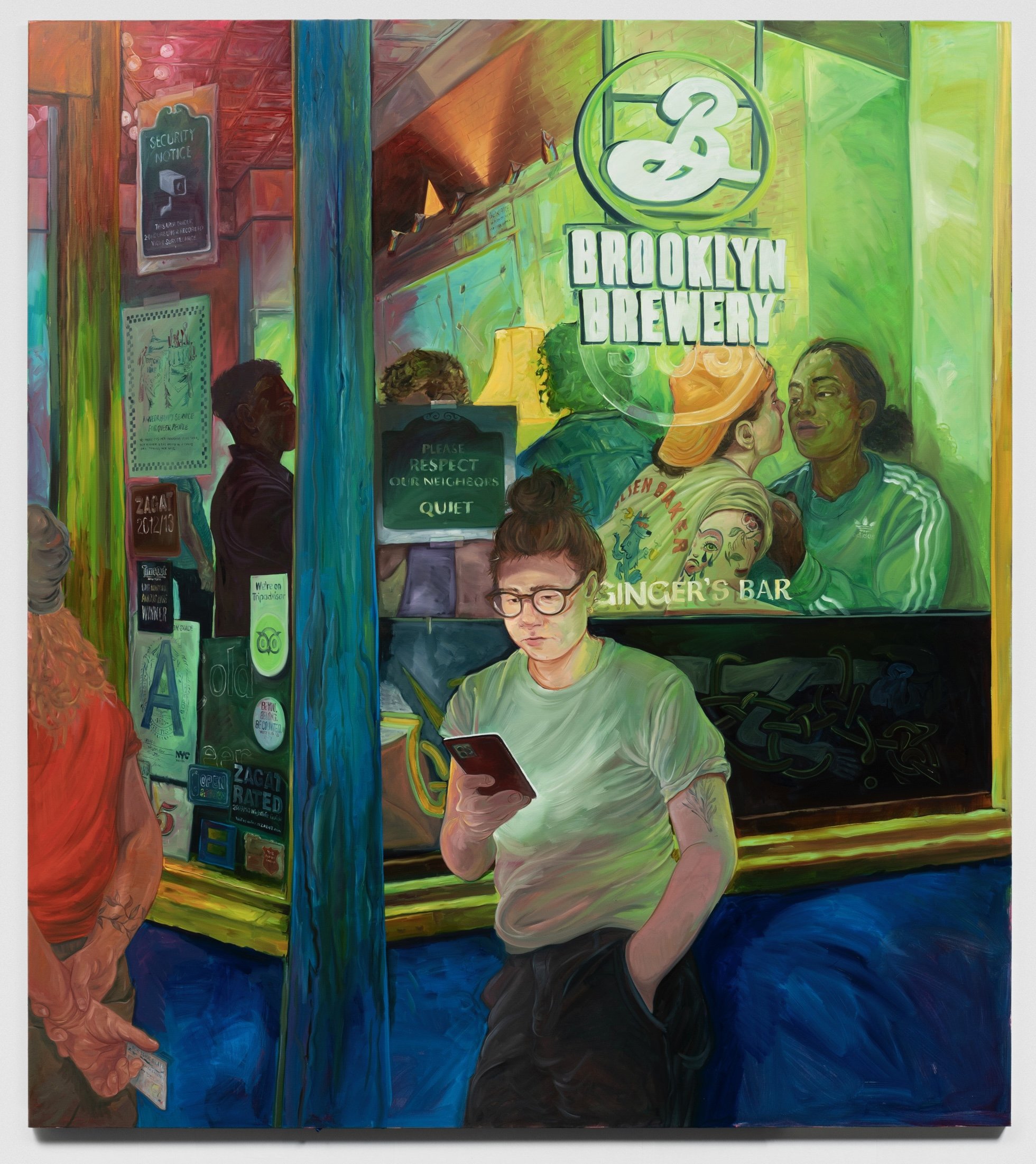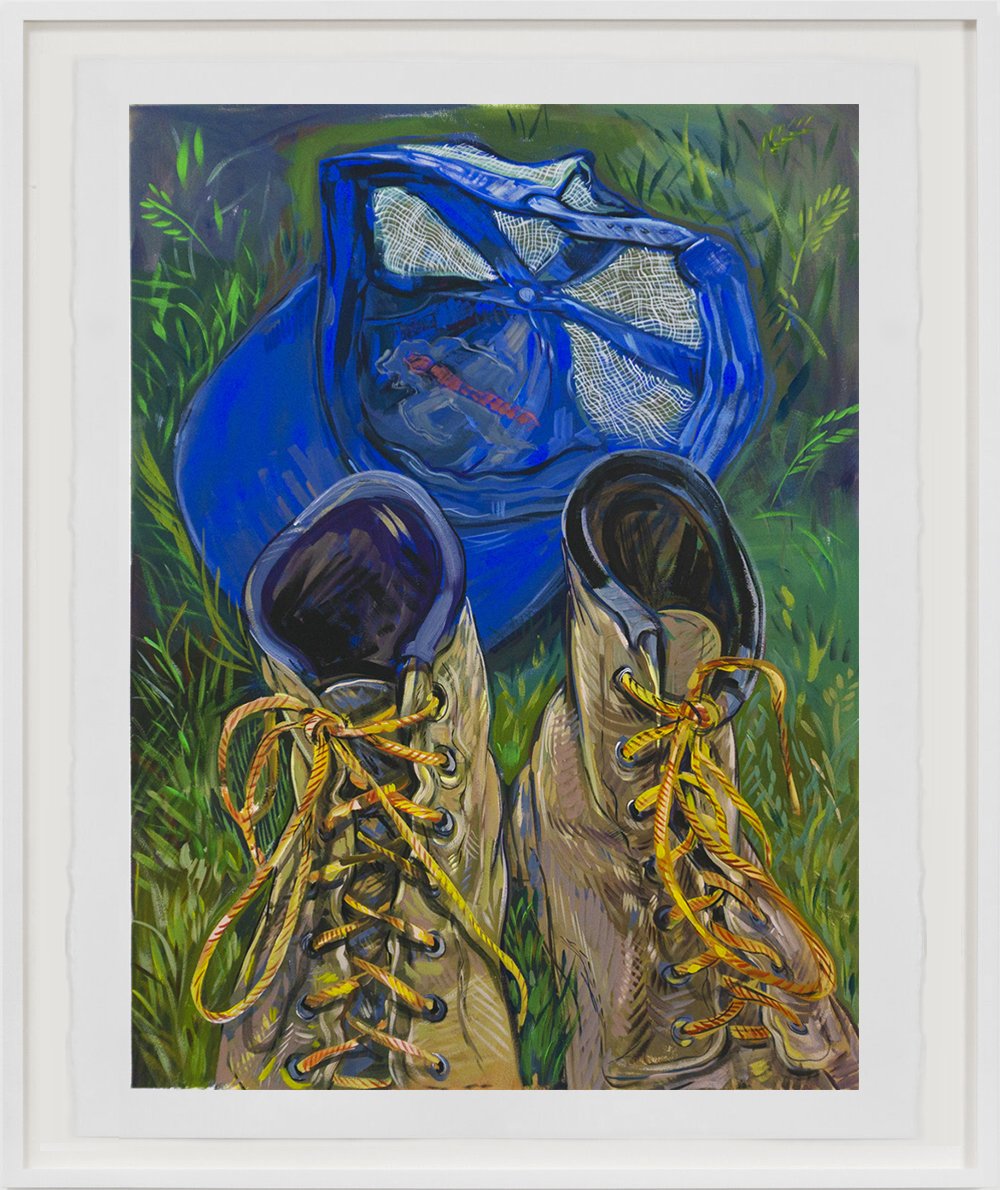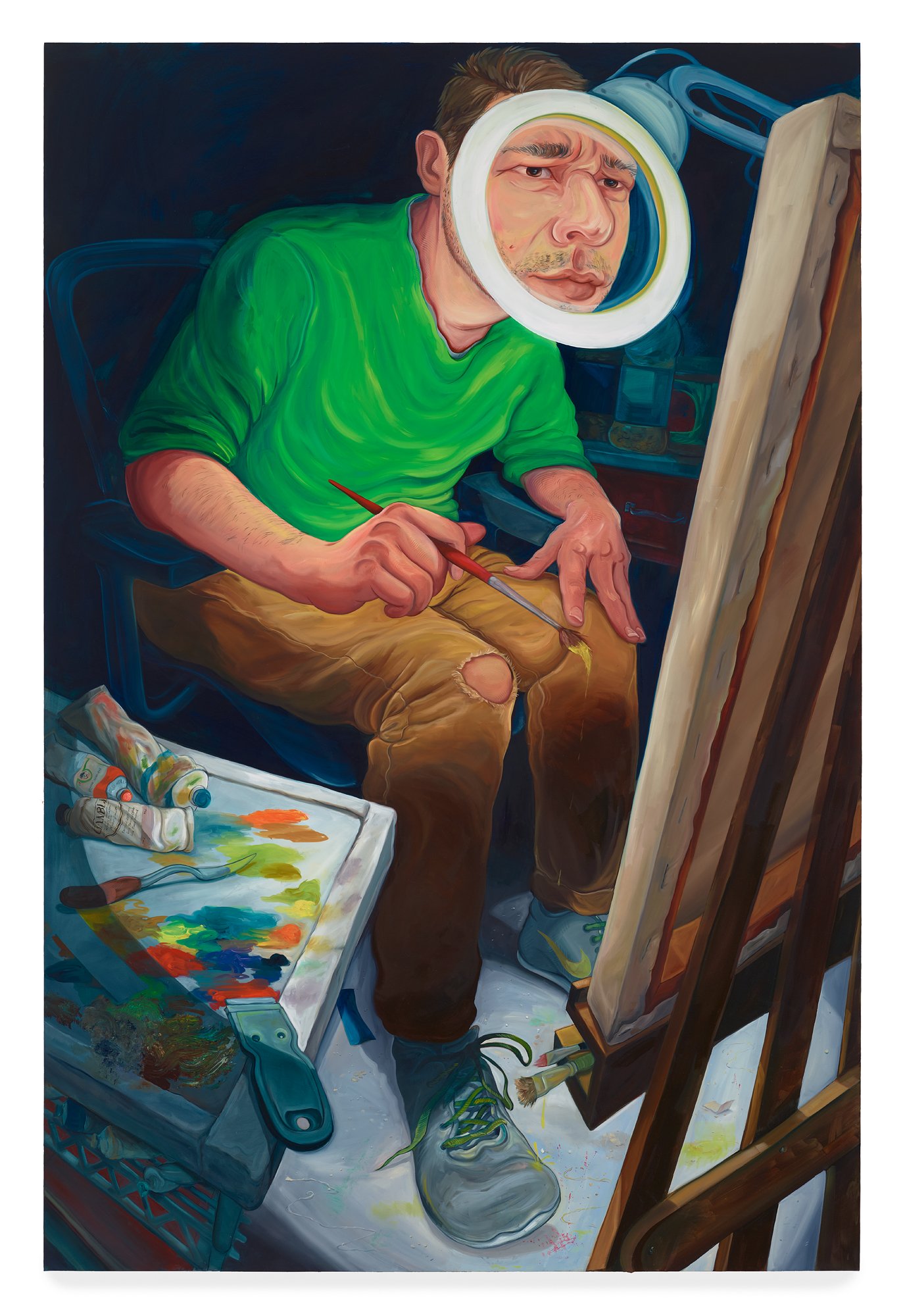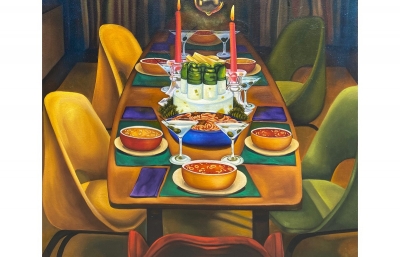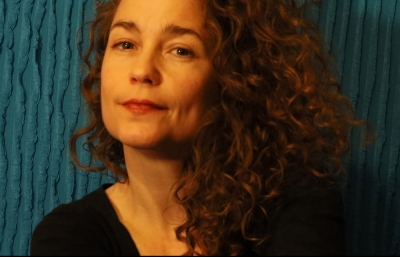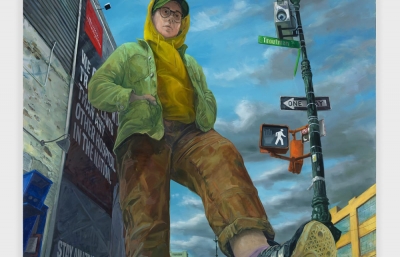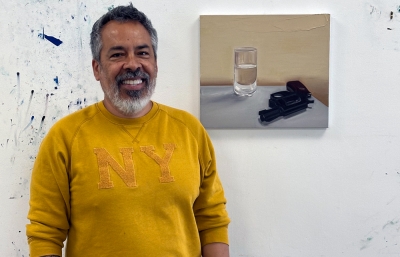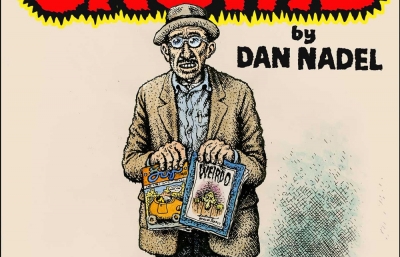Since we first engaged with Rebecca Ness during her time at Yale, it was clear she perceived the world from a unique angle, developing a density in realistic paintings, looking at friends and peers with a maximal and virtuoso command of canvas. Close-ups of hands and overhead views of desks and bodies displayed keen-eyed examinations of daily life. Over the past few years, Ness' lens has zoomed out, with social environments taking focus, whether friends' studios and homes, her own domestic space, or other places we occupy in our personal lives. Though realistic in style, fantasy inhabits each work, creating a place that is solidly familiar but imbued with a visionary utopia.
Charles Moore: The Art Cologne Fair is an event I’ve wanted to attend, so I’d like to start off with your recent experience. How did you participate, and was it different compared to other shows?
Rebecca Ness: I didn't physically attend myself. Carl Kostyal presented at the fair in a solo booth of three works, some of the largest works I've ever done, a series called Heartbreak at Gingers. Gingers is this well-known, long running dyke bar in Park Slope, Brooklyn. When I first moved to New York about two years ago and was sad, single, and lonely, it was where I’d go to visit friends.
We’d go multiple times a week, and you’d find your community—similar people who’d all go the same nights. And in my lonely times, you’d make eyes at a girl across the bar and think, “Maybe this'll turn into something.” So the linear story of the paintings in order is, first, me in the bar seeing a girl on the stairs leading out to the smoking area, where we’d have a connection and start talking. That leads to the next painting, where I go to the bathroom and am drying my hands on my shirt, but then see the girl talking to somebody else. The third painting is me leaving, calling an Uber, texting a friend, or something, just in the act of leaving. Finally, the girl is with somebody else, and through the window, they’re gone together.
That’s a summary of the many lonely times I had at that bar. But the way I view it, there’s a reference to being in this bar where you can have this breadth of human experience. There are lots of other characters drinking, falling in love, arguing, and looking at other people across the bar. So it's not just about me, but it's what dyke bars or gay bars mean to people who put so much of themselves out because it's a place to feel safe, a place where all your friends can go. There's a lot of pressure and love you put into that space, so those paintings really manifested my own love story. I ended up with my current girlfriend, who I think I'll be with forever. We had our first date at Gingers, and we had our first kiss right at the bar where I painted that other girl. So I just portrayed my own love story with whatever gay art there is in that series. It was made at a lonely time, but now I look back and think this painting has something to do with how happy I am now.
I see your work typically combining realism with expressive extraction, which is how you've related that story. Can you elaborate on this technique and how you blend modes to create such realistic interpretations?
I think what's been important for me is that I have a strong academic painting background. I was very lucky to grow up attending this afterschool art program called the Acorn Gallery School of Art. From age six, we were drawing and painting the figure in oils. Then I went to an undergraduate art school where academic figure drawing was the crux of the education. So for me, that kind of craft and the academic side of art are very important. I think about it in the same way that you need to be able to do algebra before you can do calculus. Once you know the basics, you can really play around with the material, and break the rules.
And where are you now in your development?
I think my painting language now is based on life, but I also don't want to lie. I'm not pretending that it's anything other than a painting with paint and brushes. But at the same time, we can create things that are bigger or more luscious than life, or we can mimic a dream or a thought. This reminds me of my favorite Audrey Flack quote, where she said something like, “I don't paint a lime. I paint a lime that is greener than any lime that could ever exist—and juicier.” I really like the idea of taking a slice of real life and putting some sort of focus and saturation into it, where you know that there's something else going on too. I'm not trying to hide it.
So paint me a picture of your process from start to finish, like how you conceive the idea. What's the process of starting a canvas that ends in this wonderful, finished product?
I have painting ideas that have marinated in my head for years and years. Sometimes I try them and I fail, but I think I have a pretty good instinct of knowing when I have the ability, the chops, or even the space to be able to tackle the idea. I had the idea of these bar paintings even before I knew about Gingers when I was back at Yale, and I knew this bar in New Haven called Partners. I thought maybe I'd do a Partners painting or something like that. And so the ideas muddle around, just floating in my head until I either learn something where I’m ready to execute the idea or I have a real life experience where I decide this is the right moment for those two things to become a painting. It’s like you find two parents, and you say, “I have the idea, and now I have the chops: now we can make the painting together.”
So that's how I come up with ideas. Sometimes they just pop around in the Notes app on my phone, where I have a lot of weird things. Then I decided, okay, now is the time to make this painting. I work from photographs, usually my own. I will go to a space and take photos or have friends pose for me, or I'll pose for myself, and then make a digital collage of all that. That's how I make the preliminary drawing and then go from there. I try not to make the collage or drawing too detailed because I like the idea of inventing on the canvas. If you have a drawing that's small on a tabletop, you're going to have no idea how that translates from 5 by 7 inches to 5 by 7 feet. No, you need to be, like, in front of it.
I save a lot of invention and problem-solving for when I'm in front of the canvas. Sometimes I paint over things; sometimes I add things; sometimes you think that you're ready for an idea, but once you start it, you find you don't have the skills or the chops for this yet. Once you’re on the canvas, it’s a kind of dance, an improvisation.
Give me your top three most powerful, influential books and why, and I’d like one to be a book that you think every artist should read, no matter their age, race, gender, or sexual orientation. And then two choices that are the most influential to you.
I love Ways of Seeing. It was the first art book that I read, and I think it's the one that still makes the most sense to me. Words are pretty hard for me to process. I don't really think in long sentences, words, or paragraphs. I'm more of a very visual or keyword thinker. What I enjoy about that book is how upfront it is, not trying to be some sort of art speak where I sometimes feel dumb or unable to understand. I like that it's just how we see in different ways. There are some other books that are influential to me—this is really dumb—but I love Harold and the Purple Crayon. I think it showed me that life can be art and you can create your own world around you.
There were a lot of anxious or sad parts of my childhood. Growing up gay is really hard, but you learn that through drawing, you can create your own world. When I was anxious, sad, or down on myself, I would just draw and create worlds where I felt I belonged. Harold does the same thing. In one of the bathroom stalls in my studio, someone wrote in a purple crayon, the word “Harold,” so I'm reminded of him every day.
This interview was originally published in our SUMMER 2024 Quarterly // Rebecca Ness’ solo show, Portraits of Place, was on view in San Francisco at Jessica Silverman Gallery this past spring



